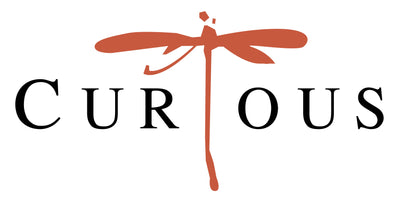Intimate Ecology: A Primer on the Unique Terrain of the Vagina

Written By Samantha Young & Elizabeth Moriarty
Arguably, the vagina -accompanied by labia, vulva and clitoris- is the most culturally fascinating part of the human body. Objectified in mythic proportion, a focus of obsession and fear and desire, this deeply contemplated body part is little discussed in terms of its intriguing physiology. Even students in advanced biology courses are given only a cursory tutorial on the science of the vagina. It ought not surprise us then that this female organ be regarded as unfathomable by women as by men.
The vagina may seem to be anatomically simple, an entrance and exit portal. Not so. It’s complex, with a sophisticated and highly dynamic biochemistry and home to an intricate ecosystem. The vagina hosts a vital community of flora that coexist with our cells and their natural functions, creating a beautiful, nuanced relationship. Think of the vagina as a lush rainforest. It has cycles that wax and wane, requires a moist environment, changes over time, and has a diverse, living community.
Let’s keep working with the metaphor- it’s compellingly accurate. Similar to a rainforest, which has a canopy, understory, and forest floor, the vagina is composed of several tissue layers; we’ll focus on the innermost layer that can be seen, called stratified squamous epithelium. This tissue is protected from the external environment by secreting a lubricant, made of proteins, sugars, electrolytes, and water. This lubricating flow serves as an optimal living environment and food source for an array of flora that take up residence in the vagina. Similarly, the soil of a forest teems with microorganisms that provide nutrients for plants.
There are several species of bacteria commonly found in the vagina, mainly of the genus Lactobaccillus. Like any other ecosystem, there are optimal and sub-optimal living conditions for these flora. In particular, the level of acidity is hugely important to our bacterial friendlies, that enjoy an optimal pH of about four, which is quite acidic. A healthy pH in the vagina is maintained by Lactobacillus as it consumes and converts its food (glycogen) into acid (lactic and acetic acids). Lactobacillus also produces other compounds (e.g. bacteriocins and hydrogen peroxide) that prevent the growth of undesirable microorganisms.
Research suggests that we begin with a small number of microbes as we develop in utero and are inoculated with a larger complement of our best microscopic friends during birth. Babies delivered via vaginal birth acquire flora from the mother’s vagina, while babies delivered via cesarean section appear to acquire flora predominantly from the mother’s skin. On a related note, women who have greater diversity of Lactobacillus in the vagina have been shown to be more fertile, while infertility is associated with the presence of unfriendly microbes, such as we find with bacterial vaginosis.
Another feature to consider in an ecosystem is climate; in the case of our vaginas, moisture levels are important. A normal, moist vagina and vulva supports a healthy abundance of friendly microbes. Vaginal secretions contain glycoproteins, polysaccharides, electrolytes, amino acids, nucleic acids, and fatty acids, which all play a role in maintaining the environment. In the vulvar region (the lady bits outside of the vagina, associated with sexual response), hydration is maintained through the natural process of water moving from inner tissue to outer layers (called transepidermal water loss). Increased hydration of the tissues is associated with a healthy abundance of microflora, which in turn strengthens the flow of moisture released by the epithelial tissue and creating a biofilm (a symbiotic dance between cells and bacteria), which protects against irritation and infections. Additionally, other components within the climate of our vaginas play a role in maintaining healthy ecosystem function; for example, fatty acids are antimicrobial towards infection-causing bacteria, like Streptococcus pyogenes and Staphylococcus aureus.
Factors that Affect the Vaginal Microbiome
Like any ecosystem, the vagina undergoes cyclical changes in pH, flora, and moisture, over the course of the menstrual cycle, a woman’s lifetime, pregnancy, while on birth control, based on sexual activity, while taking antibiotics, and due to overall health. We can all agree that our cycles are mediated by hormones, and in a large part, the mother of all hormones, estrogen. Remember that protective layer of moisture in the vagina? This is produced by estrogen receptors in the epithelial tissue, stimulated by estrogen produced in the body. More estrogen equals more lubrication, and specifically production of the sugar glycogen, which means more food for Lactobacilli- which means greater acidity. This cycle changes as our levels of estrogen fall (during our period) or rise (during mid-cycle). The interface between our intimate biome and the tissue membrane of the vagina are crucial for intimate health. We can assist our bodies by using consciously formulated products that support this natural function.
Research shows that a thriving community of distinct Lactobacillus species work together using diverse inhibitory mechanisms to keep pathogenic microorganisms at bay, “In vaginal fluid, bacteria associated with bacterial vaginosis can be suppressed with lactic acid,“ produced by Lactobacillus species, and “Some species also produce bacteriocins that can directly kill other bacterial species. Lactobacilli also likely outcompete other organisms for nutrients or receptors at the epithelial cell surface.”
Further, “Lactobacilli can also inhibit pathogen colonization by competing for host cell receptors used by urogenital pathogens such as Gardnerella vaginalis, Neisseria gonorrhoeae, Candida albicans, Staphylococcus aureus, group B Streptococcus species (GBS), Pseudomonas aeruginosa, Streptococcus agalactiae, Escherichia coli and Prevotella bivia.” Think about the importance of maintaining a balanced population of vaginal microbes to avoid urinary tract infection, yeast infection, bacterial vaginosis and even fend off sexually transmitted infections.
Other studies have suggested that our natural immune response may govern flora in the vagina, with certain genes being activated by inflammatory signals that then influence bacteria that cause infection, like bacterial vaginosis. This suggests that the flora in our vaginas is connected to inflammation in the body. It is not surprising to see that systemic inflammation is associated with the vaginal microbiome, since there is extensive research indicating that our gut microbiome is correlated with many inflammatory disorders.

Pregnancy can also affect the microbiome, with research indicating that pregnant women have a relatively homogenous community of Lactobacillus as compared to non-pregnant women. Science has also demonstrated that bacterial vaginosis is associated with an increased risk of preterm birth, likely because certain, undesirable vaginal bacteria make their way into the uterus, causing infection. Preterm birth is nothing to mess around with, causing one third of all infant deaths; an implication that a healthy vagina might be a case of life or death.
Aging
Let’s talk about what happens to the complex choreography of the vaginal ecosystem as we age. Over the course of our lives, many women experience a decrease in the production of the precursors for estrogen (androgens), as early as 45 years old. Less estrogen can change several things, most notably causing menopause - less frequent and ultimately complete cessation of the menstrual cycle. This leads to a cascade of other effects, including fewer vaginal secretions. Reduced moisture in the vagina (known in medical parlance as postmenopausal vulvovaginitis) means less inherent lubrication, which is uncomfortable for a host of reasons.
Here’s what happens: because estrogen levels are falling, there is less turnover of epithelial tissue, due to a reduction of cell growth in the vagina and vulva, and thus, a thinning of the tissues. This can lead to irritation, dryness, burning, itching, uncomfortable sex, and general discomfort. Fewer secretions means less glycogen, which means less Lactobacillus converting it to acid, which means a rising pH. Research shows that an elevated pH outside of the normal range (3.5 - 4.5) means less desirable conditions for the good bacteria and is associated with an increase in the not-so-friendly bacteria that lead to infections like Bacterial Vaginosis, Chlamydia, trichomoniasis, urinary tract infections and genital mycoplasma. This is also exacerbated by decreased moisture in the vagina which is complicit in that oh-so-important protective layer comprised largely of friendly bacteria.
Hormone Replacement Therapy is one treatment approach used by many women - this increases estrogen levels in the body, thereby increasing moisture and glycogen production in the vagina, effectively allowing Lactobacillus to proliferate and lower the pH. This can be helpful to many, but adding external sources of hormones to the body can have drastic effects. Another strategy is the use of expertly formulated topical skincare to support epithelial tissue and promote cellular turnover, balanced pH and the critical features needed to maintain a friendly vaginal ecosystem.
The delicate interplay of physiology and biochemistry with the intimate ecology of a woman’s body illustrates an evolution of remarkable complexity. Many subtle factors are integrated in maintaining intimate wellness and there are ways to support it in a proactive, conscious way, and keep our lady flora happy. Avoiding intimate lubricants, hygiene and skincare products that contain microbiome disrupting antimicrobials and contribute inflammatory, dehydrating, hyper-osmotic features is paramount. Understanding the proper function of our bodies empowers us to take control of our own health. And, when addressing the sometimes confusing and unruly topic of sexual health, being informed allows us to become more comfortable and confident with our bodies, our relationships and our choices.

Curious Intimate Skincare collection includes an array of potent medicinal plants that rejuvenate, nourish, and protect intimate tissues in formulas that deeply contemplate the science of a woman’s physiology in tandem with respect for a woman’s sexual needs. Designed to support the healthful function of a woman’s intimate biochemistry, our formulations acknowledge the crucial relationship between cellular health and a balanced microbiome.
Curious Intimate Skincare promotes balanced pH, which plays a vital role in overall vaginal health. We dispense with the troubling ingredients found in conventional products that cause harm or interfere with intimate ecology, while providing an entourage of plant-sourced oils and botanicals that work synergistically to provide cellular structural support and therapeutic phytonutrients. There is quite simply no silkier, lighter, more natural intimate skincare available.
Curious Sexual Wellness and its products and materials are not intended to treat, diagnose, cure or prevent any disease. All materials published by Curious Sexual Wellness are provided for educational purposes only. Please seek the advice of a qualified healthcare provider for any questions you have regarding a medical condition.
Curious is a registered trademark of the Luminary Medicine Company


Comments on this post (0)